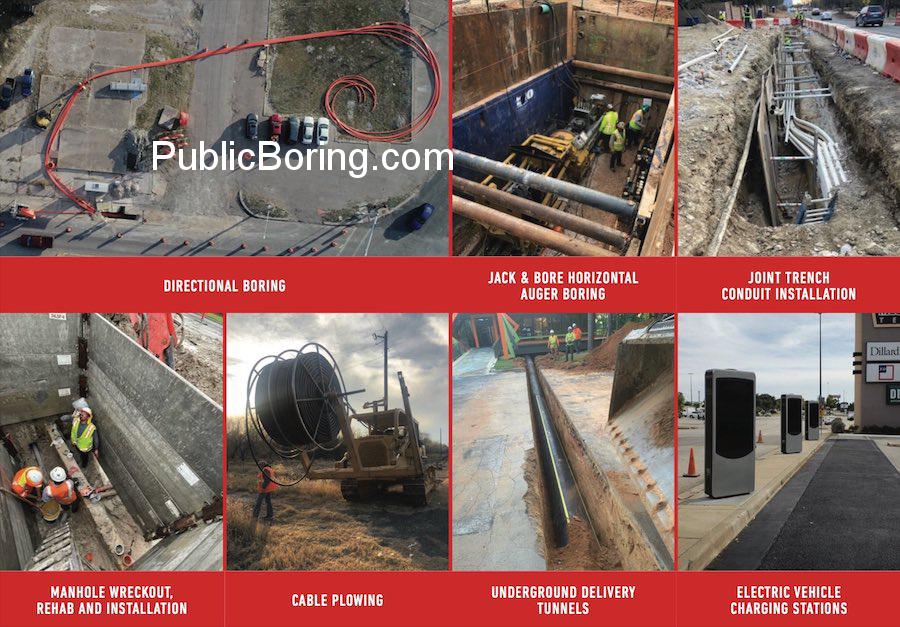HDD Rock Drilling: A Comprehensive Overview of Services and Processes
Horizontal Directional Drilling (HDD) in rock terrains is a specialized subset of the broader HDD services, tailored to address the challenges posed by hard rock formations beneath the Earth’s surface. HDD rock drilling ensures utilities are laid efficiently even in geologically challenging terrains. Here’s an in-depth description of the processes and services involved, utilizing the provided terms:
- Initial Consultation and Survey:
- Engagement with Experts: Leading corporations and specialized HDD rock drilling companies possess profound expertise in navigating the challenges of hard rock terrains.
- Site Development: Construction site development is carried out to comprehensively understand the geological conditions, ensuring optimal drilling paths and techniques.
- Preparation Phase:
-
- Excavation: Precise entry and exit pits are excavated, ensuring minimal disruption to the landscape.
- Selection of Drilling Equipment: Given the challenging nature of hard rock, using the best and most appropriate drilling equipment is crucial.
- Installation Setup: The setup is optimized to cater to specific requirements like wet or dry drilling based on rock porosity and location specifics.
- HDD Rock Drilling Process:
-
- Pilot Bore in Hard Rock: The primary drill bore is initiated, leveraging specialized drill heads suitable for hard rock terrains.
- Reaming and Enlarging: The pilot bore is methodically enlarged to fit the utility. In rocky terrains, this often requires advanced techniques and multiple passes.
- Utility Pullback: Whether it’s electrical conduits, fiber optic cables, or sewer lines, the utility is seamlessly pulled back through the established bore.
- Utility Installation and Infrastructure:
-
- Ductbank Installation: Especially relevant in urban or congested infrastructural settings, ductbanks ensure multiple utilities are systematically housed.
- Fiber Installation: Advanced techniques like blowing fiber or fiber boring are employed for telecommunication utilities installation, catering to requirements like FTTH, FTTB, FTTCS, and FTTT.
- Joint Trenching: For projects where multiple utilities are laid parallelly, joint trenching is executed for efficiency.
- Collaborations and Engagements:
-
- Local, Military, and Government Collaboration: For projects adjacent to highways, interstates, railroads, or military bases, necessary permissions and collaborations are essential. Engaging with local LLCs, co-ops, or government entities ensures smooth project execution.
- Subcontractor Engagement: Complex projects might entail the involvement of specialized subcontractors to handle specific components.
- Post-Drilling Operations:
-
- Landscape Rehabilitation: The disturbed landscape is restored to its original or a better state, ensuring environmental sustainability.
- Utility Testing and Inspection: Comprehensive testing ensures that the installed utilities are in optimal working condition.
- Maintenance, Emergency, and Other Services:
-
- Emergency Response: In cases of unexpected disruptions or challenges, emergency teams are equipped for swift rescue and remedial actions.
- Maintenance and Checks: Routine inspections and maintenance operations ensure the utility’s prolonged health and efficiency.
In essence, HDD rock drilling is an intricate process, requiring meticulous planning, execution, and post-installation care. The emphasis on collaboration, expertise, and the use of advanced technology ensures that utilities are efficiently installed, even in the most challenging terrains. Whether catering to smart cities, solar farms, or simple local projects, HDD rock drilling companies are pivotal in today’s infrastructural landscape.


